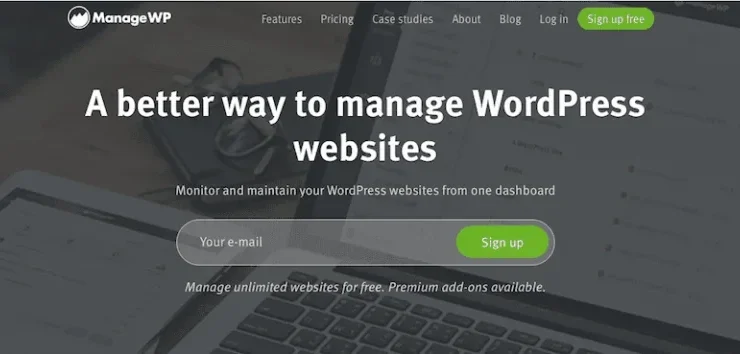
Websites that experience high traffic volumes require robust and reliable hosting solutions to function seamlessly and consistently.
A sudden influx of visitors can overwhelm underpowered infrastructure, leading to frustrating slowdowns, errors, and ultimately, a poor user experience.
Choosing the correct hosting for high traffic is crucial for maintaining a positive online presence and ensuring your website stays online 24/7, regardless of visitor spikes.
This is where the selection of the optimal hosting provider, and subsequently the best hosting for high traffic, becomes paramount.
A poorly configured server can lead to diminished website performance, impacting everything from SEO rankings to customer satisfaction, and even potentially causing revenue loss.
Ensuring your platform is resilient and able to manage substantial traffic loads is essential for ongoing success and growth in the online marketplace.
This article will explore the critical factors involved in finding the best hosting for high traffic, examining key features and performance indicators to help you make an informed decision.
Understanding server capabilities, bandwidth allocations, and the importance of scalable infrastructure are crucial components for success in today’s online environment. We’ll delve into these and other factors that will guide you towards the optimal web hosting solution for websites experiencing high traffic loads.
Server Resources and Scalability: A Cornerstone of Best Hosting for High Traffic
Robust server resources are fundamental for websites anticipating high traffic, as they dictate the ability to handle a large volume of requests without experiencing performance issues.
A key aspect of choosing the best hosting for high traffic is evaluating the server’s processing power (CPU), memory (RAM), and storage space.
Websites experiencing consistent or fluctuating high traffic require hosting solutions capable of scaling to meet demands dynamically.
This scalability ensures that the website remains responsive and available to users, even during peak visitor times.
Choosing a hosting provider with scalable infrastructure is critical for managing unpredictable traffic spikes, preventing slowdowns and ensuring optimal performance during periods of high demand.
The selection of appropriate server resources and the flexibility of the hosting platform to adapt are integral to the overall resilience of the website and its ability to deliver a seamless user experience for large numbers of visitors.
A hosting solution designed to handle substantial traffic loads will not only improve response time and reduce the likelihood of outages, but also contribute to the overall user experience and a positive brand image.
Server resource limitations will hinder the website’s ability to handle increased traffic, resulting in poor performance, increased bounce rates, and ultimately, a loss of potential customers.
Furthermore, the best hosting for high traffic should provide comprehensive tools for monitoring server resources and identifying potential bottlenecks in real-time.
These tools enable proactive management of server capacity and allow for adjustments to maintain optimal performance even during peak traffic.
Careful consideration of server resources and scalability is crucial in the selection of a hosting plan that can consistently handle the demands of a high-traffic website.
Choosing a provider offering scalable infrastructure and the necessary processing power is paramount to ensuring your website’s continuous availability and performance.
Server Resources and Scalability: A Cornerstone of Best Hosting for High Traffic
Robust server resources are fundamental for websites anticipating high traffic, enabling them to handle a substantial volume of requests without performance degradation.
A crucial aspect of selecting the best hosting for high traffic is analyzing the server’s processing power (CPU), random access memory (RAM), and storage capacity. These components directly impact a website’s ability to function smoothly under pressure.
Websites experiencing consistent or fluctuating high traffic demands necessitate hosting solutions equipped for dynamic scaling. This scalability ensures the website maintains responsiveness and accessibility, even during peak visitor times.
High-traffic websites often experience unpredictable surges in visitors. A hosting provider with scalable infrastructure can accommodate these spikes effectively, preventing slowdowns and ensuring optimal performance during periods of high demand.
Insufficient server resources can lead to website downtime, impacting user experience significantly and potentially damaging search engine optimization (SEO) rankings. The consequence of inadequate hosting can extend to decreased customer satisfaction and lost revenue opportunities.
Choosing a hosting platform that offers a variety of scalability options is vital for future-proofing a website’s performance. The capacity to upgrade resources as traffic increases is essential for sustained website health and stability.
Monitoring server resources and anticipating potential traffic spikes are key strategies for maintaining a high-performance website. Continuous monitoring ensures proactive adjustments to resource allocation, preventing website slowdowns and downtime.
A hosting provider’s ability to manage and dynamically allocate server resources is critical. A responsive provider will adjust resources automatically based on demand, ensuring exceptional website performance under any conditions.
Ultimately, selecting the right hosting for high traffic involves a comprehensive evaluation of server resources and their scalability potential. The stability and performance of the hosting platform directly correlate with the success of the website.
Choosing a hosting provider committed to a robust and scalable infrastructure is paramount for sustained website performance and success when handling high traffic volumes.
Investing in optimal server resources ensures a resilient platform capable of handling anticipated and unexpected high traffic loads. This is crucial for website owners aiming for a seamless and positive user experience.
Scalability is a vital component of choosing the best hosting for high traffic because it allows the website to adapt and grow with increasing demands.
Scalability and Performance for High-Traffic Hosting
Scalability is a crucial factor when choosing a hosting provider for websites experiencing high traffic.
High-traffic websites require hosting solutions that can adapt to fluctuating demands, ensuring smooth performance and optimal user experience without compromising site speed or reliability.
A scalable hosting plan allows a website to handle increased visitor numbers, peak traffic periods, and data storage requirements as the website grows, without significant performance degradation or service interruptions.
The ability to seamlessly add resources like RAM, storage, and bandwidth capacity is key to this scalability feature in a hosting service.
Scalability often comes hand-in-hand with performance, as both are intrinsically linked to a hosting platform’s capacity to manage increasing website traffic loads.
High-performance hosting solutions are critical for websites experiencing significant traffic surges.
Fast loading times are paramount for maintaining user engagement and minimizing bounce rates, especially on high-traffic sites. This translates into better search engine rankings and enhanced user satisfaction.
Fast loading times stem from aspects of the hosting infrastructure, including server speed, network connectivity, and optimized caching mechanisms.
High-performance hosting providers often employ Content Delivery Networks (CDNs) to distribute website content across various servers globally.
This strategy reduces latency for users worldwide, enhancing website speed and overall performance in a high-traffic environment.
Furthermore, the choice of server type significantly impacts performance for high-traffic web hosting.
Utilizing robust servers equipped with the latest technology and optimized configurations can greatly improve website performance and responsiveness for a large number of concurrent users.
High-traffic websites often need to handle a considerable amount of data, and a hosting provider with high-traffic capabilities ensures that the infrastructure can support the data load and transfer speeds.
Consideration for robust server infrastructure and consistent bandwidth are critical aspects of selecting the best hosting for high traffic.
A reliable hosting infrastructure with adequate bandwidth and storage capacity is a must for a website experiencing substantial user traffic.
This ensures that users can access website content without delays or interruptions. Sufficient bandwidth is crucial to handle peak traffic periods without affecting site speed or performance.
In summary, effective high-traffic website hosting needs a robust, scalable infrastructure that prioritizes performance.
A hosting provider with robust scalability, speed, and reliability is essential for maintaining user experience and keeping a website running efficiently and smoothly under high-traffic conditions.
Scalability and Resource Allocation for High Traffic
Scalability is paramount when choosing a hosting provider for high-traffic websites, as fluctuating demands necessitate a system that can adapt.
A robust hosting platform must effortlessly handle surges in visitors, preventing performance bottlenecks and ensuring a seamless user experience.
This means the server infrastructure should be designed to dynamically allocate resources as needed, preventing slowdowns during peak traffic periods, even during unexpected spikes in demand.
Crucially, a high-performance hosting solution for high traffic websites should support increased bandwidth and storage capacity to accommodate growing data and traffic volume.
A hosting provider that boasts highly available servers with redundant configurations is crucial; this minimizes downtime, a critical factor for maintaining user trust and brand reputation. This reliability and adaptability are crucial for hosting a site with high traffic, as unforeseen demands can easily overwhelm under-resourced solutions.
Furthermore, the ability to easily adjust server configurations and add resources as needed is key to handling future growth. This proactive approach helps prevent issues that often result in sluggish or unresponsive websites when traffic volume outstrips allocated resources.
The hosting provider’s technical support should also be well-equipped to assist in managing and scaling the hosting solution as the website’s traffic volume grows, ensuring consistent performance and a positive user experience.
Finally, understanding how the hosting provider manages server resources, such as RAM, CPU, and storage, is vital for choosing the best hosting for high traffic. A clear understanding of the hosting company’s scaling capabilities is paramount for future growth and peak performance.
A provider capable of handling high traffic should also proactively monitor server performance, enabling them to address potential issues swiftly and mitigate risks to uptime.
Choosing the right hosting provider is paramount for websites experiencing significant traffic spikes and fluctuating demands.
This article highlighted the crucial factors – server performance, scalability, reliability, and robust support – that define the best hosting for high traffic websites.
From cloud-based solutions designed for dynamic load balancing to dedicated servers offering unparalleled customization, the options presented cater to a wide range of needs and budgets.
Ultimately, the best hosting for high traffic ensures seamless user experiences, prevents downtime, and allows businesses to scale their operations effectively without compromising site performance or security.
Investing in a high-quality, scalable hosting infrastructure is not just a technical consideration; it’s a crucial aspect of maintaining brand reputation, generating revenue, and fostering user engagement. Selecting the best hosting for high traffic directly impacts your website’s ability to handle peak periods and maintain its accessibility and responsiveness, ultimately driving better results for your online business or project. The choice is a strategic one, influencing the overall success and longevity of your online presence.






